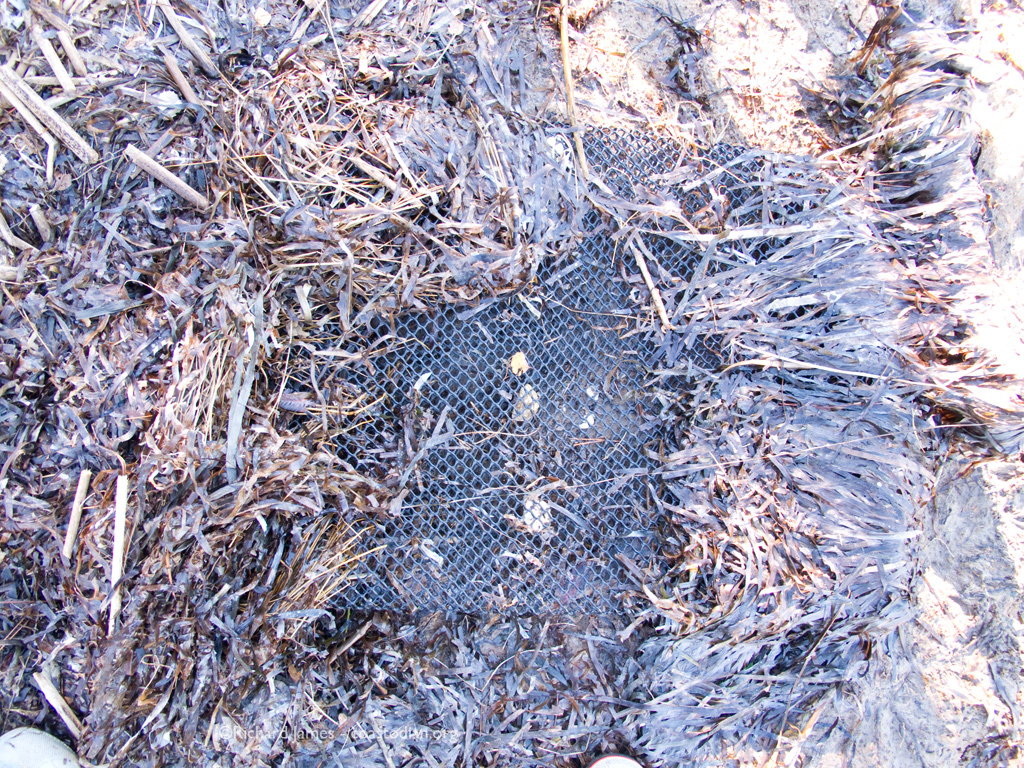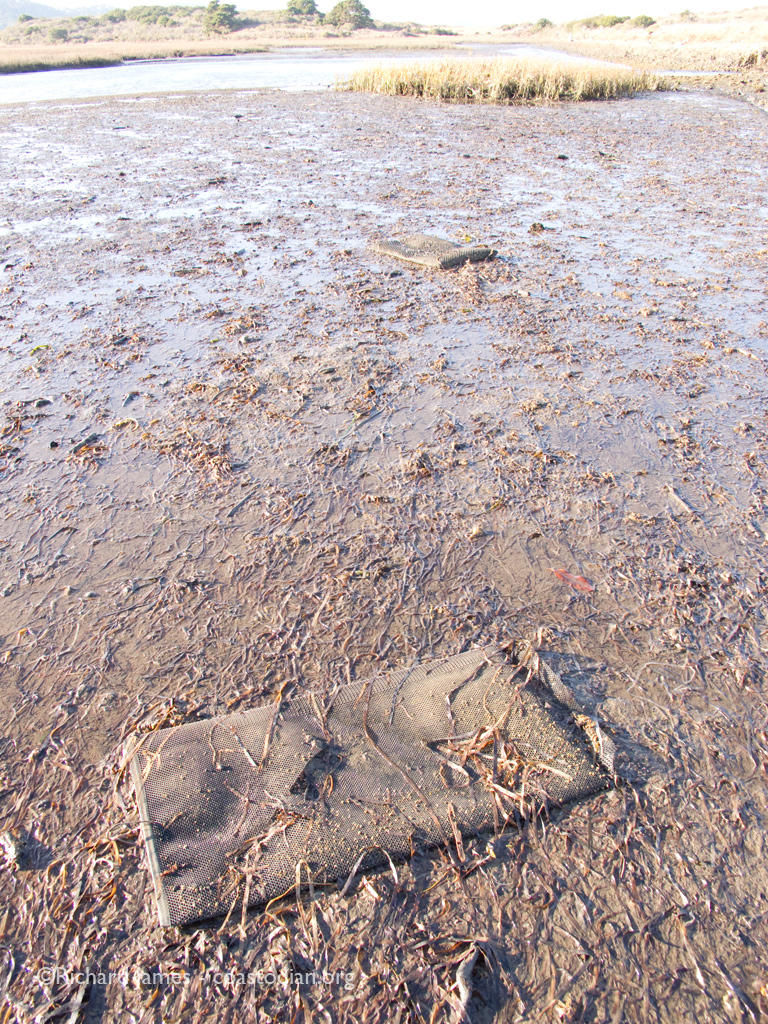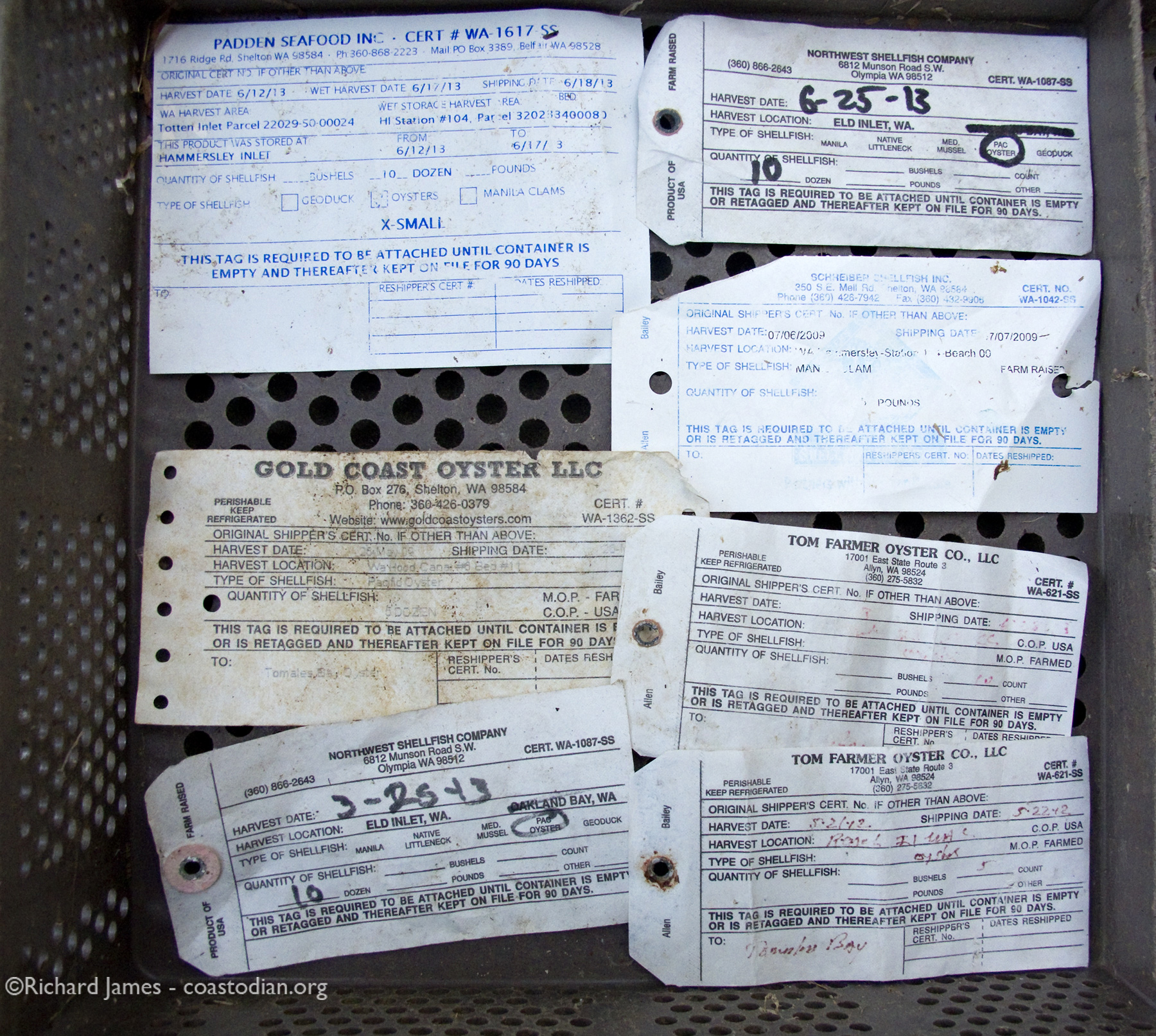Click on the words above “Save our Tomales Bay…” to see this post as it was meant to be seen.
It appears I was premature in doling out kudos to the folks at Tomales Bay Oyster Company (TBOC) for picking up after themselves.
The garbage continues to show up on the stretch of shore just south of their retail operation.
I continue to be flummoxed at how a business dependent on nature for profits can be so cavalier in the care of that same environment from whence the bivalve bucks become.
Good news to report though. The Department of Fish & Wildlife has furnished me with maps showing who has a state water bottom lease for aquaculture in Tomales Bay. Equally interesting is who does not have a lease (or sub-lease) to grow shellfish in the saltwater of Tomales Bay
With these maps I hope to be better able to figure out the source of the garbage in Tomales Bay.
I’ve been justly heaping the shame on Tomales Bay Oyster Company for producing the mess I find in the southern end of Tomales Bay. I say justly because the state of the shore I walk reflects the state of the production area and the mudflats directly in front of the operation in The Bay.
In a word, deplorable, describes how it looks.
Armed with these new maps, I see that there are three other Oyster farmers with leases in the southern bay region, Hog Island Oyster Company, Point Reyes Oyster Company and Marin Oyster Company.
In light of this, I’ll be sure to share the responsibility of the continuous mess I find equitably.
The folks at Hog Island contacted me recently. They care deeply about the bay and want to work with me to see how to have regular, thorough clean-ups of the feral plastic their operations introduce into the global ecosystem. They continue to reach out to fellow oysterers for help in recovering the rubbish that regularly is loosed on the water and land by wind and wave. Let’s hope with increased public scrutiny, all growers participate in protecting the Bay from human activity from now on.
More on that later.
Below are images from efforts on 14 and 15 December.
—
Click image for a larger version
—

Five weeks ago I recovered 24 bags along with the usual plastic bits, bottles and foam.
—
Click image for a larger version
—

Last week in the same area I collected 29 bags.
Does anyone see a trend here? I’m told these bags cost 2 bucks a piece. Must be good money in oysters to be throwing away so much cash.
—
—
—
Click image for a larger version
—
—
—
—
Click image for a larger version
—
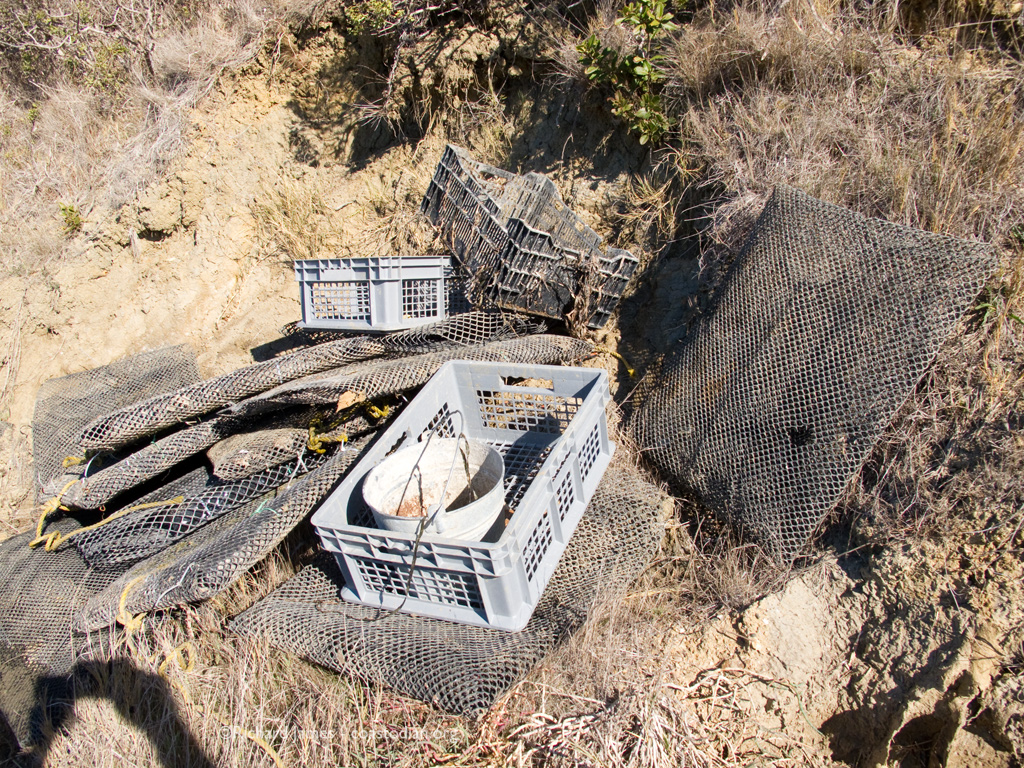
One of a few “work-sites” on The Bay where materials and rubbish are regularly left to the winds and waves.
—
—
—
Click image for a larger version
—

Suppliers to the oyster trade of West Marin. Admiralty Seafood, Drakes Bay Oyster Company, Montana Reach dba Cold Creek Oysters, Northwest Shellfish Company, Schreiber Shellfish Company, Tom Farmer Oyster Company, Tomales Bay Oyster Company
—
Are these companies aware that their name is attached to oyster farm debris littering Tomales Bay?
—
You betcha!
—
—

More tags from those Washington oysters – Nisqually Tribe Shellfish Farm, Tom Farmer Oyster Company, Taylor Shellfish Farms, Gold Coast Oyster LLC, Northwest Shellfish Company, Schreiber Shellfish Inc.
—
Click image for a larger version
—
—
Click image for a larger version
—

Boat loaded down with several hours work cleaning up after local oyster farmers.
—
—

Feral plastic unloaded and turned into a monument to oyster profits over a clean environment.
—
Click image for a larger version
—
—
—

—
Now that the hard work of finding, pulling out of the mud and returning to the source has been done for them, I hope they at least had the decency to come out and get their trash. The low tide prevented me from getting in closer to shore.
—
Click image for a larger version
—
—
—
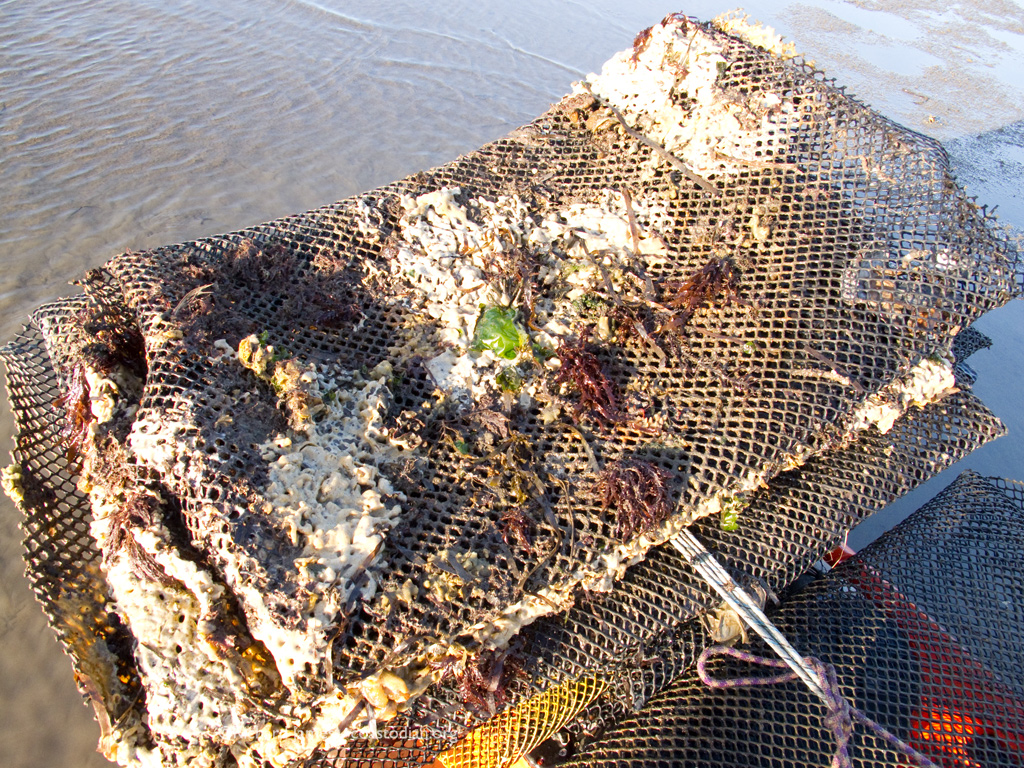
Dozens of bags buried in the mud, abandoned for so long they have become substrate for the ecosystem.
Polyethylene is not a sustainable substrate.
—
Click image for a larger version
—
—
—
—
Click image for a larger version
—

oyster bags, plastic ropes – tools of the oyster trade I find all over the beaches of West Marin.
The same material found in the guts of dead whales, dead turtles and dead birds.
—
—
—
Click image for a larger version
—

This foam provides buoyancy for the work platforms used by oyster farmers.
–
I find this stuff all over the place. Some pieces too large to fit in my car, so they are strapped on top.
–
I’ve been picking this up from the shores of Drakes Estero for years.
–
Thankfully that operation will soon close and the source of this toxic blight in those waters will go away.
–
Ironic that I regularly find dust pans on the beach. Brooms and brushes too.
—
—
—
Click image for a larger version
—
—
—
—
Click image for a larger version
—
—
—
—
Click image for a larger version
—
—
—
—
Click image for a larger version
—
—
—
—
Click image for a larger version
—
—
—

Grow-out bag covered with California horn snails CORRECTION: Japanese Mud Snails, brought in with non-native oysters long ago. Yet more damage done to California environmnet by shellfish growers. They eat detritus and benthic diatoms. Their preferred diet is benthic diatoms, not the detritus you see here.
—
Click image for a larger version
—

Grow-out bag covered with California horn snails CORRECTION: Japanese Mud Snails, brought in with non-native oysters long ago. Yet more damage done to California environmnet by shellfish growers. They eat detritus and benthic diatoms. Their preferred diet is benthic diatoms, not the detritus you see here.
—
—

No oysters in this long abandoned grow-out bag. Just sand and mud.
—
Click image for a larger version
—

No oysters in this long abandoned grow-out bag. Just sand and mud.
—
—

No oysters in this long abandoned grow-out bag. Just sand and mud.
—
Click image for a larger version
—

No oysters in this long abandoned grow-out bag. Just sand and mud.
—
—

No oysters in this long abandoned grow-out bag. Just sand and mud.
—
Click image for a larger version
—
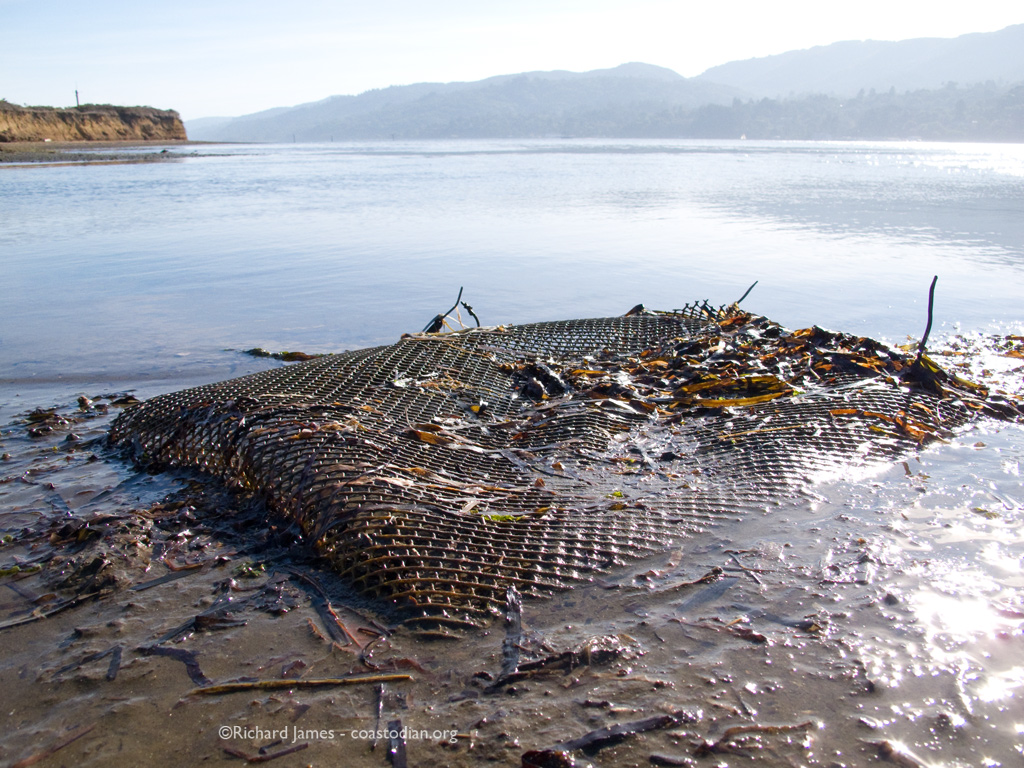
No oysters in this long abandoned grow-out bag. Just sand and mud.
.
Next related post may be found here.
Previous related post may be found here.
See the first post in this series “Save our Tomales Bay” here.



